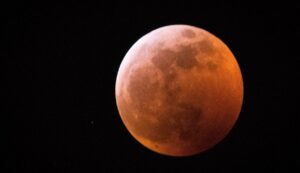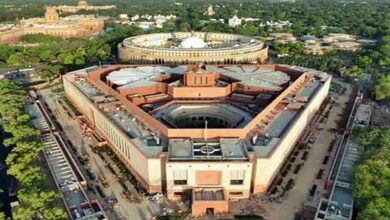Lunar Eclipse 2024 Today: How and when can you see the lunar eclipse 2024?
A lunar eclipse, also known as Chandra Grahan, is a celestial occurrence in which the Earth passes in front of the Sun and the Moon, causing the Moon to cast a shadow. Only under a full moon, when all three heavenly bodies are in a straight line, does this phenomena occur.

The 2024 Lunar Eclipse, also known as the Chandra Grahan, is set to occur today, September 18, 2024. Many people were unsure whether it would happen on September 17th or September 18th, but astrologers and experts say it will happen tomorrow, on Wednesday, September 18, 2024.
While the Moon will be below the horizon during the cosmic event, India will not be able to see this celestial occurrence. Indian viewers would thus be unable to see the partial moon eclipse.
Nonetheless, people all around the nation continue to place religious significance on the heavenly occurrence. Here is the most recent information on when to watch this amazing event.
How and When Can You Watch Chandra Grahan 2024?
Indian Standard Time (IST) indicates that the moon eclipse will take place on September 18. This is the timetable including the key stages:
• At 06:11 AM, the penumbral eclipse begins.
• Start of the Partial Eclipse: 07:42 AM
• Eclipse maximum: 08:14 AM
• At 8:45 AM, the partial eclipse ends.
• At 10:17 AM, the penumbral eclipse ends.
•What Occurs When There Is a Lunar Eclipse?
A lunar eclipse occurs when the Earth passes directly between the Sun and the Moon, preventing the Moon from receiving sunlight. This alignment can only happen when there is a full moon. The moon progressively darkens as it moves under Earth’s shadow. During complete eclipses, sunlight may refract through Earth’s atmosphere, scattering shorter wavelengths of light, giving the moon a reddish tint. During totality, this occurrence produces a stunning visual effect that makes the moon look coppery or red. The event may persist for many hours, during which time successive stages of darkness can be seen from anywhere on Earth’s nightside.
Is It Allowed to See the Lunar Eclipse Without Clothes?
A lunar eclipse may be seen safely with the unaided eye, unlike a solar eclipse. The Moon reflects sunlight instead of emitting any light of its own. The Moon is too dim to harm eyes, not even during a complete lunar eclipse.
Therefore, although seeing a lunar eclipse without any additional equipment is OK, looking straight at the sun during a solar eclipse is not advised. The strong light from the sun might harm your eyes permanently.
Penumbral, partial, and total lunar eclipses are the three different types that happen when the Earth moves in front of the Sun and the Moon, preventing light from reaching the Moon. Three types of lunar eclipses exist
Full Moon Eclipse
During a total lunar eclipse, sunlight scatters through the Earth’s atmosphere and totally obscures the Moon with its umbra, giving the Moon a dark red appearance. Because of its crimson color, this occurrence is sometimes referred to as a “Blood Moon”.
A portion of the lunar eclipse
Only a section of the Moon passes into the umbra of Earth during a partial lunar eclipse. As a consequence, some of the Moon seems to be darker than the remainder, which is still fully lighted by sunlight.
Lunar Eclipse Penumbral
When the Moon moves through the penumbra, or outer shadow, of Earth, it is called a penumbral lunar eclipse. This variety just slightly reduces the moon’s brightness, making it faint and sometimes difficult to see.





